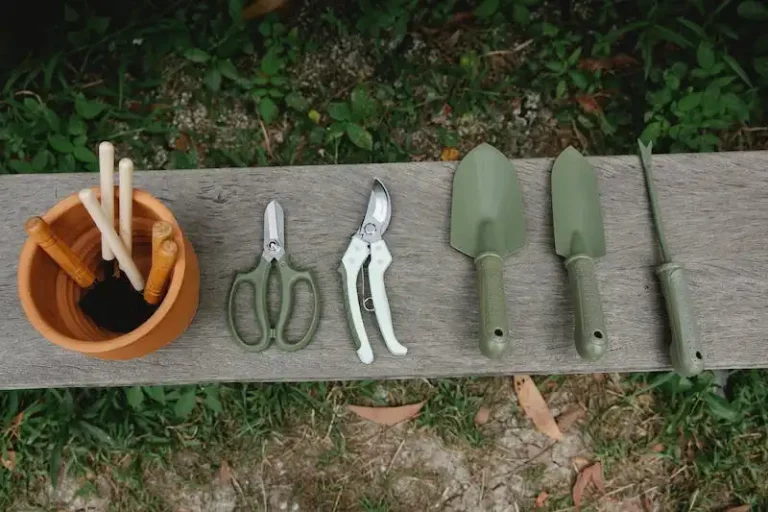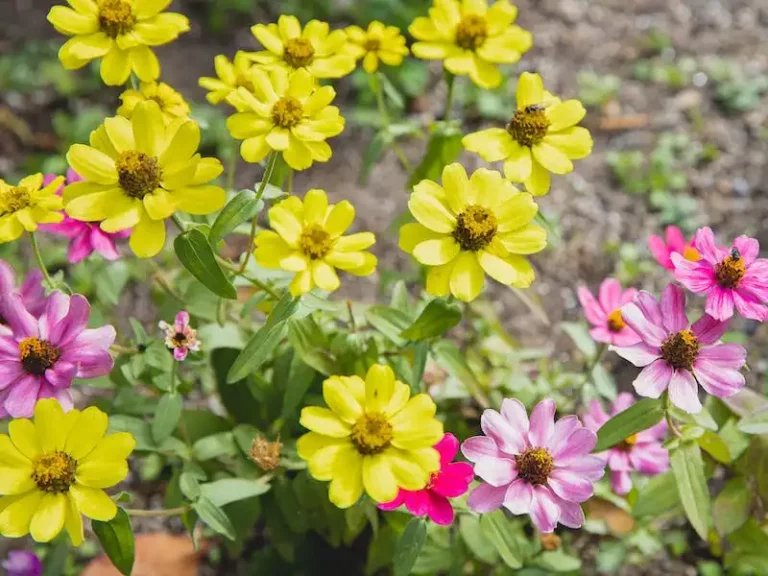Growing rocket, also known as arugula, is a popular choice among gardeners due to its versatility and variety of uses. Rocket can be grown in your garden or greenhouse and is known for its quick growth and peppery flavor.
When it comes to planting rocket, it’s important to consider the timing and location. Rocket prefers well-drained soils and full sun, although it can tolerate partial shade. The best time to sow rocket seeds is in early spring, around April, or in late summer, around August. This ensures that the plants have enough time to grow before the heat of summer or frost of winter sets in.
Rocket is a fast-growing plant that needs some care to thrive. It is susceptible to pests and weeds, so regular thinning and weeding is necessary to ensure strong growth. Providing the plants with a range of companion plants can help deter pests and improve overall plant health. Some good companion plants for rocket include radishes, lettuce, and marigolds.
When it comes to harvest, rocket can be harvested when the leaves are young and tender, about 4 to 6 weeks after sowing. You can either harvest the entire plant or simply pick the outer leaves as needed. Rocket can also self-seed, so if you leave some plants to bolt and go to seed, you may have new plants coming up the following year.
Preparing the soil before planting rocket is essential. The soil should be fine and well-drained, and any large clumps or stones should be removed. Adding organic matter, such as compost or well-rotted manure, can help improve drainage and provide nutrients for the plants.
Overall, growing rocket is a great way to add a spicy kick to your garden. With the right location, sowing timing, and companion plants, you can enjoy a bountiful harvest of this flavorful green. So why not give it a try and add some rocket to your garden this year?
Sources: Shutterstock.com, Plantura, Karnataka Horticulture
How to grow rocket
Rocket, also known as arugula, is a leafy green vegetable that is commonly grown for its peppery flavor. It is a popular addition to salads, sandwiches, and pesto. Here is an overview of how to grow rocket in Karnataka, India.
1. Sowing rocket seeds: Rocket seeds can be sown directly into the garden or in pots. Before sowing, prepare the soil by removing any weeds and ensuring that it is well-drained. Rocket can be grown in horticultural similar conditions that are suitable for other leafy greens.
2. Timing: Sow rocket seeds in Karnataka anytime from August to February. Rocket tends to bolt and become less tender in hot summer months. So, it is best to avoid summer sowings.
3. Planting: Plant rocket seeds in a location that receives full sunlight. Sow the seeds about 1/4 inch deep, and leave a distance of about 6 to 8 inches between each plant. Rocket plants are fast-growing and can be easily grown in containers, making them ideal for balcony or raised bed gardening.
4. Watering: Rocket needs regular watering, especially during dry spells. Water the plants in the morning to prevent excess moisture on the leaves, which can lead to pests and diseases.
5. Care: Rocket seedlings are readily available in nurseries and can be transplanted for faster growth. Ensure that the plants have enough space to spread and grow. Remove any weeds that may compete for nutrients and water.
6. Harvesting: Rocket leaves can be harvested as soon as they are visible and have reached the desired size. They can be eaten either as baby leaves or when they have fully matured. Rocket leaves have a fine texture and a distinct peppery taste.
7. Common problems: Rocket is generally a hardy plant and does not face many pest and disease problems. However, common pests like aphids and flea beetles may sometimes attack the plants. Regular inspection and use of organic pest control methods can help manage these issues.
For more tips and detailed information on growing rocket, refer to horticulture resources or gardening references specific to your region.
References:
1. Plantura – “Growing Rocket: This is How It Works!”
2. Planting Food – “How to Grow Rocket”.
Sow and grow
When it comes to planting rocket, there are a variety of tips for sowing and growing this versatile plant. Rocket can be grown in pots or directly in the ground, and it is especially well suited for windowsill or balcony gardening.
Sow rocket seeds in April and continue sowing every few weeks for a continuous harvest throughout the summer. To sow, plant the seeds in well-drained soil or compost, either in rows or scattered across the growing area. Thin the seedlings to allow proper growth, leaving about 10cm between each plant.
Rocket plants grow quickly and can be picked when they reach around 10cm in height. Harvest the leaves by picking them from the outside of the plant, allowing the inner leaves to continue growing. This way, you can have a longer harvest period. Rocket can be harvested within a few weeks of sowing, making it a great choice for those who want quick results.
Companion plants such as mustard are ideal to grow alongside rocket, as they help to deter pests and improve the overall health of the plants. Other companion plants that work well with rocket include lettuces and edible flowers like marigolds and nasturtiums.
If your rocket bolts and flowers, it is still edible, although the leaves will be less tender. To prevent bolting, make sure to keep the rocket well watered and in a cooler part of the garden during the hotter months. Repeated sowings every few weeks can also help ensure a continuous harvest.
For troubleshooting and pest control, consider the following tips:
- Keep the growing area weed-free to avoid competition for nutrients.
- Provide a rich, well-drained soil or compost.
- If pests are a problem, try using natural pest control methods or companion planting with plants that deter pests.
- Harvest rocket regularly to keep it from bolting and keep the leaves young and tender.
With these tips, you can enjoy a bountiful harvest of rocket throughout the summer season. Enjoy adding rocket to your salads, using it in pesto, or as a garnish for various dishes. Rocket is a versatile and flavorful plant that adds a unique taste to any meal. Happy planting!
Get started
Before planting rocket, it is important to choose the right location for sowing the seeds. Rocket plants prefer full sunlight, so find a spot in your garden or raised bed that gets at least 6 hours of direct sunlight each day. If you live in a hot area, some afternoon shade may be beneficial to prevent the plants from bolting too quickly.
The soil conditions are also important for the successful growth of rocket. The soil should be well-draining and rich in organic matter. Prepare the soil by removing any weeds or grass and loosening it to a depth of about 6-8 inches. If your soil is heavy clay or compacted, consider adding some compost or well-rotted manure to improve its texture and fertility.
Sow the rocket seeds directly into the prepared soil. Make small shallow furrows, about half an inch deep, and sow the seeds about 6-8 inches apart. Cover the seeds with soil and gently pat it down. Water the area thoroughly after sowing to ensure the seeds are moist and to encourage germination.
Keep the soil moist during the germination stage, which usually takes about 7-14 days. Once the seedlings have emerged, thin them out to maintain a spacing of about 6-8 inches between plants. You can either transplant the thinned seedlings to other areas of your garden or simply pick them for fresh salads or use them as companion plants for other crops.
Rocket plants are relatively easy to grow and don’t require much care. However, there are a few common problems you may encounter. Rocket plants can be prone to flea beetle damage, especially in hot weather. To prevent this, you can cover the plants with a fine mesh or fleece. Additionally, rocket plants can bolt and become bitter if they are grown in hot weather or if they are not regularly harvested. To avoid this, try to pick the leaves when they are young and tender, and harvest the entire plant before it reaches the flowering stage.
In terms of timing, you can sow rocket seeds in both spring and late summer for continuous harvest. Sowing in spring will give you a crop that can be harvested throughout the summer, while sowing in late summer will provide you with a crop that can be harvested in the fall. If you live in a warm climate, you can also sow rocket seeds in the winter for a crop in early spring.
There are several different rocket varieties available, each with its own unique flavor and growing conditions. Some popular rocket species include Eruca vesicaria, Diplotaxis tenuifolia, and Diplotaxis erucoides. Experiment with different varieties to find the ones that grow best in your garden and suit your taste preferences.
Companion planting can be beneficial for rocket plants. They grow well with a range of other plants, including tomatoes, lettuce, basil, and radishes. These companion plants can help deter pests, improve soil conditions, and attract beneficial insects.
So, if you want to enjoy the tangy and peppery flavor of rocket leaves, follow these tips and get started on growing your own rocket plants!
Step-by-step
When it comes to planting rocket, there are several stages you need to follow.
First, choose a location for your rocket plant. Rocket grows best in full sunlight, so choose a spot that receives at least 6 hours of direct sunlight per day. If you don’t have a garden, you can also plant rocket in containers on your patio or windowsill.
Next, prepare the soil before sowing the rocket seeds. Rocket plants prefer well-drained soil that is rich in organic matter. You can improve the soil by adding compost or well-rotted manure. Dig the soil to a depth of about 6 inches and remove any weeds or rocks.
Once the soil is prepared, you can start sowing the rocket seeds. Sow the seeds directly into the soil or you can start them indoors in seed trays or pots before transplanting them to the garden. If you are sowing directly into the soil, make shallow trenches about ¼ inch deep and place the rocket seeds about 6 inches apart.
After sowing the seeds, water the soil gently to ensure good contact between the seeds and the soil. Keep the soil moist but not waterlogged. Rocket plants need regular watering, especially during dry periods.
Within a few days, the seedlings should start to emerge. As they grow, thin them out to a smaller spacing of about 4 inches apart. This will give each rocket plant enough space to grow and reduce competition for nutrients.
As the rocket plants continue to grow, you may need to provide support by staking them. Rocket plants can grow quite tall and may need support to prevent them from bending or falling over.
Harvesting rocket leaves can be done when they are young and tender. Rocket leaves are best harvested before the plant bolts and the leaves become bitter. To harvest, simply cut the outer leaves with a pair of scissors, leaving the inner leaves to continue growing.
If you encounter any issues or pests, there are several troubleshooting methods you can try. Rocket plants are generally pest-resistant, but if you notice any pests, you can try using horticultural oil or insecticidal soap. Additionally, providing proper spacing between plants and regular watering can help prevent pest infestations.
In summary, planting rocket requires preparing the soil, sowing the seeds, providing adequate care, and harvesting at the right time. By following these steps, you can enjoy delicious rocket salads in your garden or patio all year round!




